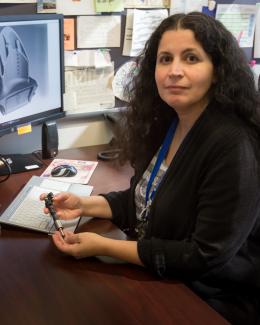Abstract
Using neutron radiography, the measurement of water thickness was performed using aluminum (Al) water calibration cells at the High Flux Isotope Reactor (HFIR) Cold-Guide (CG) 1D neutron imaging facility at Oak Ridge National Laboratory, Oak Ridge, TN, USA. Calibration of water thickness is an important step to accurately measure water contents in samples of interest. Neutron attenuation by water does not vary linearly with thickness mainly due to beam hardening and scattering effects. Transmission measurements for known water thicknesses in water calibration cells allow proper correction of the underestimation of water content due to these effects.
As anticipated, strong scattering effects were observed for water thicknesses greater than 2 mm when the water calibration cells were positioned close to the face of the detector / scintillator (0 and 2.4 cm away, respectively). The water calibration cells were also positioned 24 cm away from the detector face. These measurements resulted in less scattering and this position (designated as the sample position) was used for the subsequent experimental determination of the neutron attenuation coefficient for water.
Neutron radiographic images of moist Flint sand in rectangular and cylindrical containers acquired at the sample position were used to demonstrate the applicability of the water calibration. Cumulative changes in the water volumes within the sand columns during monotonic drainage determined by neutron radiography were compared with those recorded by direct reading from a burette connected to a hanging water column. In general, the neutron radiography data showed very good agreement with those obtained volumetrically using the hanging water-column method. These results allow extension of the calibration equation to the quantification of unknown water contents within other samples of porous media.




